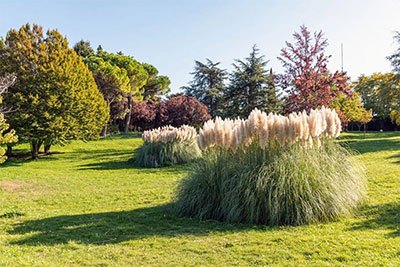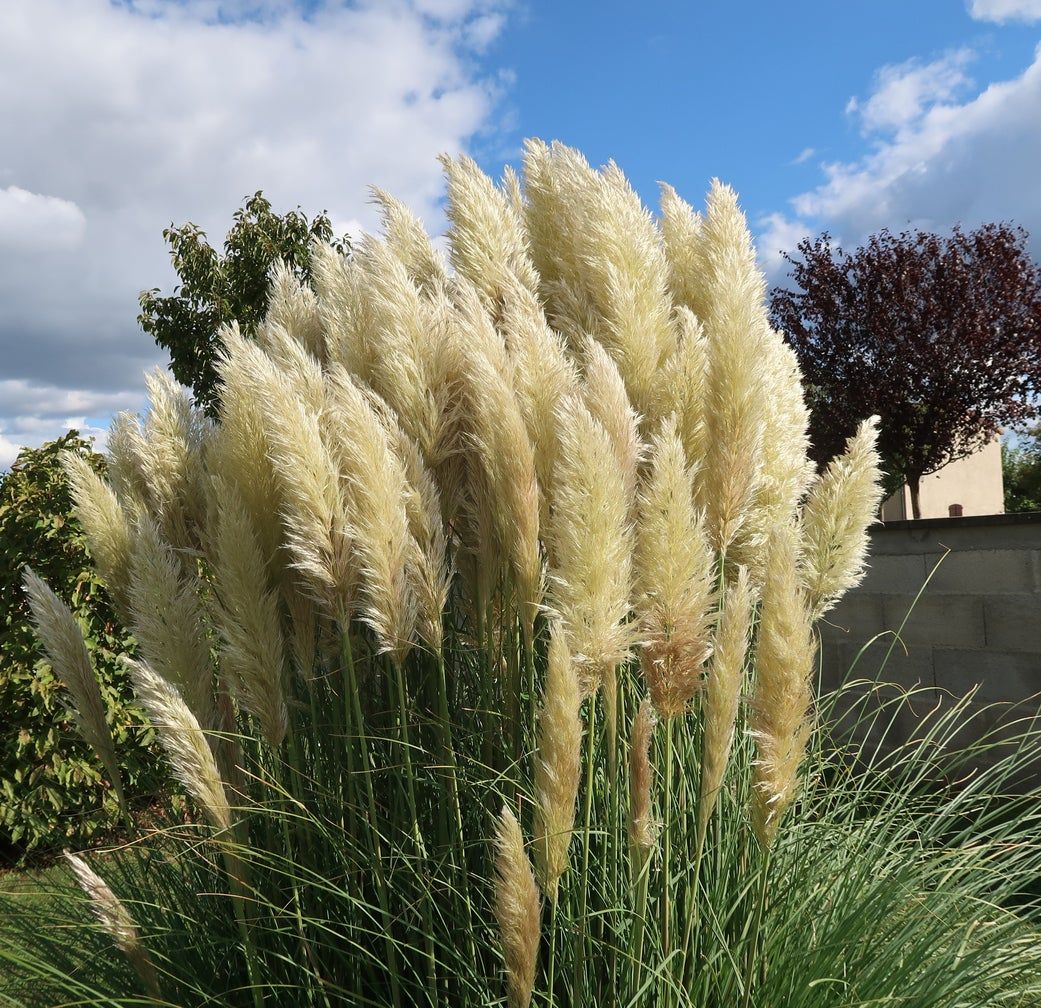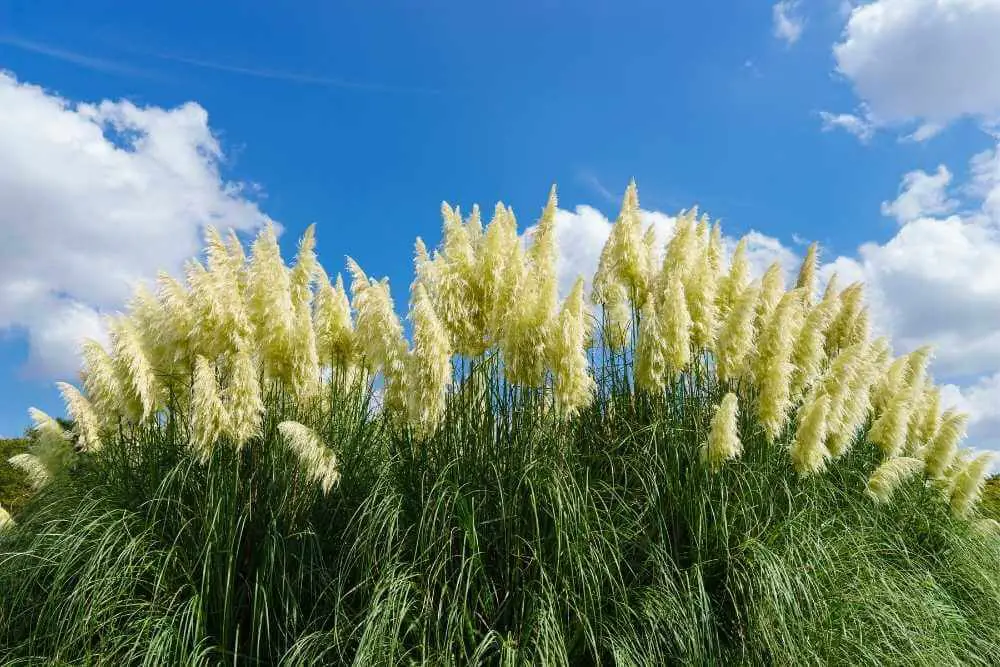Why Pampas Grass Needs to Go
Pampas grass, a highly invasive species, has become a significant environmental concern in many regions. Its rapid spread has led to the displacement of native vegetation, altered ecosystems, and even posed a threat to biodiversity. The need to control pampas grass is pressing, as it can outcompete native species for resources, alter fire regimes, and reduce habitat quality. In fact, pampas grass has been listed as a noxious weed in several countries, highlighting the importance of taking action to prevent its further spread. By understanding the negative impacts of pampas grass, individuals and organizations can take the necessary steps to eradicate this invasive species and restore balance to affected ecosystems. Learning how to kill pampas grass is a crucial step in this process, and it requires a comprehensive approach that addresses the root causes of its invasion. Effective methods for eradicating pampas grass involve a combination of physical removal, chemical control, and long-term monitoring to prevent regrowth.
Understanding Pampas Grass: Its Growth Habits and Weaknesses
To effectively eradicate pampas grass, it’s essential to understand its growth habits and weaknesses. Pampas grass is a perennial species that can grow up to 10 feet tall, with a deep root system that allows it to outcompete native species for water and nutrients. Its ability to produce large amounts of seeds, which can remain viable in the soil for years, makes it a formidable invasive species. However, pampas grass also has vulnerabilities that can be exploited for control. For instance, its roots are susceptible to damage from digging and cutting, and its leaves can be affected by herbicides. By understanding how to kill pampas grass, individuals and organizations can develop targeted strategies to eradicate this invasive species and restore balance to affected ecosystems. By recognizing the strengths and weaknesses of pampas grass, it’s possible to develop a comprehensive approach to controlling its spread and preventing regrowth.
How to Kill Pampas Grass: Physical Removal Methods
Physical removal methods are a crucial step in learning how to kill pampas grass. These methods involve manually removing the grass, either partially or entirely, to prevent its spread and promote ecosystem recovery. Digging is a effective method for small infestations, as it allows for the removal of the entire root system. Cutting and mowing can also be used to control pampas grass, but they require repeated treatments to prevent regrowth. It’s essential to note that physical removal methods can be labor-intensive and may not be feasible for large infestations. However, when combined with chemical control and other integrated approaches, physical removal methods can be a powerful tool in the fight against pampas grass. For instance, digging can be used to remove pampas grass from sensitive habitats, while cutting and mowing can be used to control its spread in larger areas. By understanding the strengths and limitations of physical removal methods, individuals and organizations can develop targeted strategies for killing pampas grass and restoring balance to affected ecosystems.
Chemical Control: Herbicides and Their Application
When it comes to learning how to kill pampas grass, chemical control is a crucial aspect to consider. Herbicides can be an effective way to kill pampas grass, especially for large infestations or in areas where physical removal methods are not feasible. Glyphosate, imazapyr, and triclopyr are some of the most effective herbicides against pampas grass. These herbicides can be applied using various methods, including foliar spraying, cut stump treatment, and basal bark treatment. However, it’s essential to exercise caution when using herbicides, as they can also harm non-target species and contaminate soil and water. To ensure safe and effective application, it’s recommended to follow the label instructions, wear protective gear, and avoid spraying during windy or rainy conditions. Additionally, it’s crucial to note that chemical control should be used in conjunction with physical removal methods and other integrated approaches to achieve optimal results. By understanding the role of herbicides in killing pampas grass, individuals and organizations can develop a comprehensive strategy for eradicating this invasive species and restoring ecosystem balance.
Combining Physical and Chemical Methods for Optimal Results
When it comes to learning how to kill pampas grass, a comprehensive approach is essential. Combining physical removal methods with chemical control can lead to more effective eradication of pampas grass. This integrated approach can help to overcome the limitations of individual methods and achieve optimal results. For instance, physical removal methods can be used to remove the majority of the pampas grass, while chemical control can be used to target any remaining plants or prevent regrowth. By combining these methods, individuals and organizations can develop a tailored strategy for killing pampas grass that takes into account the specific characteristics of the infestation and the surrounding ecosystem. For example, a successful integrated approach might involve digging to remove the root system, followed by foliar spraying with a herbicide to target any remaining plants. By understanding the benefits of combining physical and chemical methods, individuals and organizations can develop a more effective strategy for killing pampas grass and restoring ecosystem balance. This approach can also help to reduce the risk of regrowth and minimize the need for follow-up treatments.
Preventing Regrowth: Strategies for Long-Term Control
Once pampas grass has been eradicated, it’s essential to prevent regrowth to ensure the long-term success of the control efforts. This requires a combination of monitoring, follow-up treatments, and habitat restoration techniques. Regular monitoring is crucial to detect any new pampas grass growth, allowing for prompt treatment and preventing the infestation from spreading. Follow-up treatments may involve re-applying herbicides or physical removal methods to target any remaining plants. Additionally, habitat restoration techniques, such as replanting native species, can help to restore ecosystem balance and reduce the likelihood of pampas grass regrowth. By understanding how to prevent pampas grass regrowth, individuals and organizations can ensure that their control efforts are effective in the long term and that the ecosystem is restored to a healthy state. This is a critical aspect of learning how to kill pampas grass, as it requires ongoing management and maintenance to prevent re-infestation. By incorporating these strategies into a comprehensive approach, individuals and organizations can achieve long-term control of pampas grass and protect ecosystems from its negative impacts.
Case Studies: Successful Pampas Grass Eradication Projects
Several successful pampas grass eradication projects have demonstrated the effectiveness of a comprehensive approach to killing pampas grass. For example, a project in California’s Santa Monica Mountains used a combination of physical removal methods, including digging and cutting, with chemical control using herbicides. This integrated approach resulted in a 95% reduction in pampas grass cover over a three-year period. Another project in New Zealand’s Hawke’s Bay region employed a similar approach, with a focus on habitat restoration techniques to promote the growth of native species. This project achieved a 90% reduction in pampas grass cover over a five-year period. These case studies highlight the importance of persistence and follow-up efforts in achieving long-term control of pampas grass. They also demonstrate the value of learning how to kill pampas grass through a combination of physical and chemical methods, as well as habitat restoration techniques. By studying these successful projects, individuals and organizations can gain valuable insights into the most effective strategies for eradicating pampas grass and restoring ecosystem balance.
Conclusion: A Comprehensive Approach to Killing Pampas Grass
In conclusion, eradicating invasive pampas grass requires a comprehensive approach that incorporates physical removal methods, chemical control, and habitat restoration techniques. By understanding the growth habits and weaknesses of pampas grass, individuals and organizations can develop effective strategies for killing pampas grass and preventing its regrowth. The case studies presented in this article demonstrate the importance of persistence and follow-up efforts in achieving long-term control of pampas grass. To successfully learn how to kill pampas grass, it is essential to combine physical and chemical methods, monitor for regrowth, and implement habitat restoration techniques. By adopting a comprehensive approach, individuals and organizations can protect ecosystems from the negative impacts of pampas grass invasion and restore ecosystem balance. Remember, killing pampas grass is a long-term process that requires ongoing management and maintenance, but with the right strategies and techniques, it is possible to achieve effective control and restore ecosystem health.





